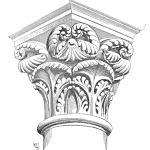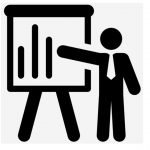
Some time ago when talking with someone I just met, the conversation turned to what we did for a living. I mentioned being a reliability engineer, and his response: “Oh, yes, we do reliability”. Curious, as I’m not sure that I ‘do reliability’, we then talked about what he meant.
The conversation revealed that they had a list of tasks that they accomplished for each product under development. They did tests and reviews of the results. A lot of testing. They did FMEA and HALT. He believed the engineers did derating or stress/strength calculation. He didn’t know about process stability with vendors or internal manufacturing lines.
They did stuff, which meant they did reliability.

 Ever wonder how some organizations make their vibration or thermographic program work, and not only work but deliver huge results to their organization? They use a systematic approach to establishing the correct frequencies of inspection. Establishing the correct frequencies of maintenance activities is critical to the success of any maintenance program. Too infrequently and the organization is subjected to failures, resulting in poor operational performance. Too frequently, and the organization is subjected to excess planned downtime and an increased probability of maintenance induced failures.
Ever wonder how some organizations make their vibration or thermographic program work, and not only work but deliver huge results to their organization? They use a systematic approach to establishing the correct frequencies of inspection. Establishing the correct frequencies of maintenance activities is critical to the success of any maintenance program. Too infrequently and the organization is subjected to failures, resulting in poor operational performance. Too frequently, and the organization is subjected to excess planned downtime and an increased probability of maintenance induced failures.







 Think about your maintenance program. How often are your PMs scheduled? How were those frequencies established? If you are in the majority, the chances are that the frequencies were either established from the OEM manual, or by someone in the department without data.
Think about your maintenance program. How often are your PMs scheduled? How were those frequencies established? If you are in the majority, the chances are that the frequencies were either established from the OEM manual, or by someone in the department without data. This formula is used to establish the economic life of the component, balancing the cost of the downtime vs. the cost of the replacement.
This formula is used to establish the economic life of the component, balancing the cost of the downtime vs. the cost of the replacement.


